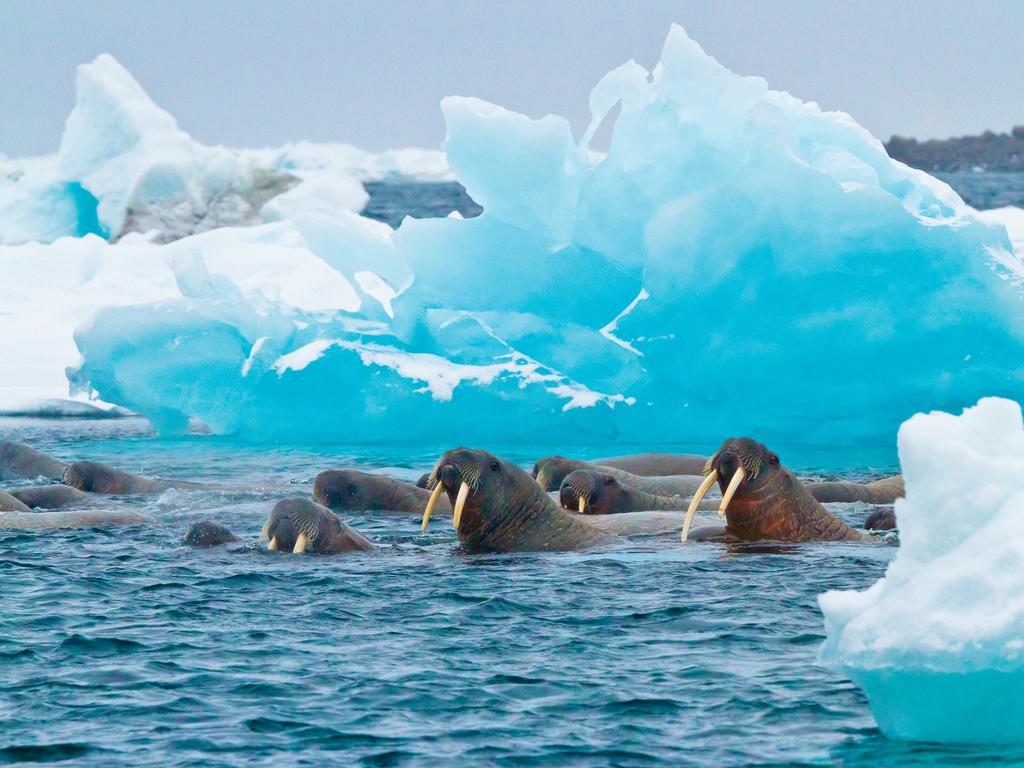Tasmania holiday home Whale Song a real estate revelation
There’s something about this former fisherman’s cottage that elevates it to the realm of the mystical.
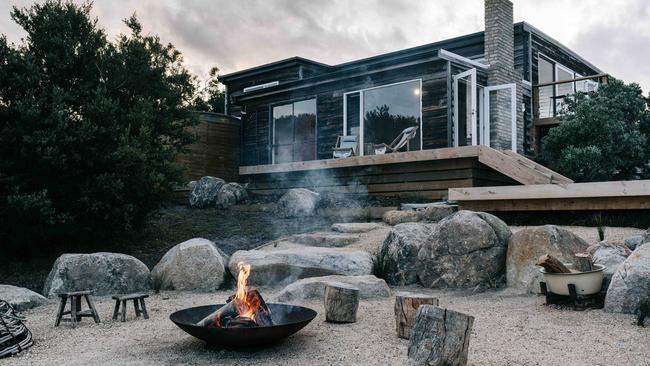
The name is spelled out in seashells on a timber shack at the edge of the world: Whale Song. It wouldn’t surprise me if you could lie awake at night and listen to the calls of humpbacks as they make their way north for the winter. There’s something about this former fisherman’s shack that elevates it to the realm of the mystical.
Falmouth (pronounced Falmith) is a quintessential seaside hamlet, half an hour south of St Helens on Tasmania’s east coast. It began as a farming and fishing village in the mid-19th century, morphing 100 years later into a hideaway for holidaymakers and hermits. Boxy beach homes squat in the sand dunes and thick clumps of Tasmanian smokebush line a tranquil lagoon. There are no shops (it’s a 10-minute drive to Scamander for milk) and no distractions other than the birds, a gushing blowhole in the rocks and a sprinkling of trophy homes rising like glass-fronted fortresses on the headland.
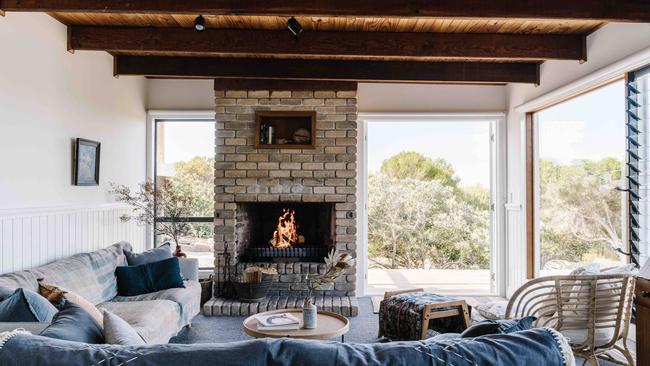
Whale Song is the antithesis of those, though. On paper you might wonder what puts this modest seaside shack in such hot demand, with its two-and-a-half snug bedrooms, one shared bathroom and patchy Wi-Fi. Well, you find out pretty fast.
The place looks like it just got back from a trip to the op-shop, clad in vintage, rough-sawn cedar weatherboards, with a jaunty brick chimney poking into the sky. A bottle of local gin is waiting for us on arrival, set on a 1960s drinks trolley alongside dried blood oranges, lime and a block of organic chocolate. It does no harm to first impressions.
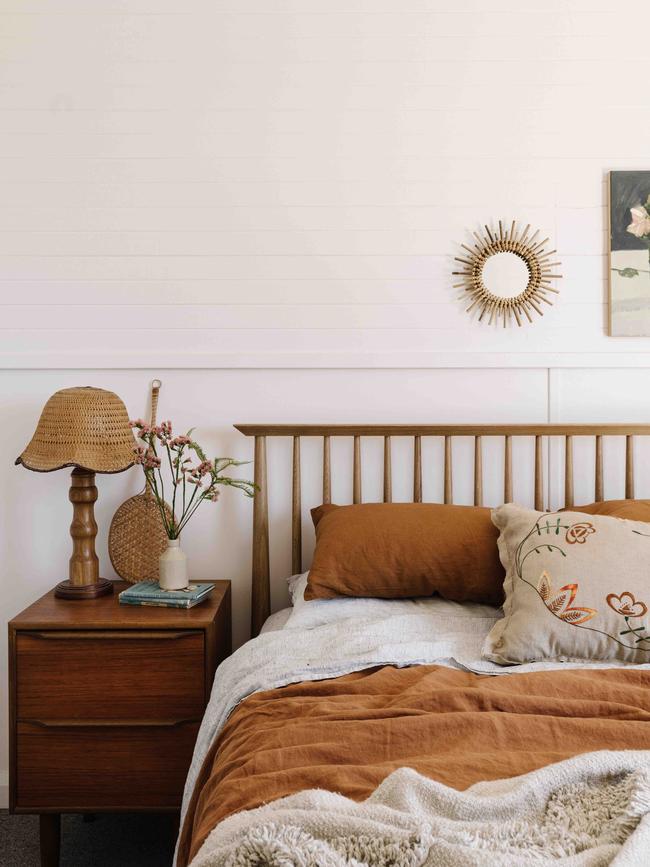
Mood established, we chink glasses and head for the deck, with its view over the fire pit to the reef. The sea is so close I’m sure king tides would bring it sloshing to the door.
Pacific gulls bob on the swell and cormorants perch on granite boulders, hanging their wings out to dry. Tea trees quiver in the warm afternoon breeze. We bring a little Bluetooth speaker on to the deck and listen to the violin-led majesty of Ocean Songs, an album by Melbourne instrumental band The Dirty Three, a soundtrack surely recorded with this very scene in mind. Mood solidified.
Whale Song’s journey from knockabout (and nameless) beach pad to sought-after rental home is part of a well-recognised real estate evolution. The split-level house was built in 1981 by a fisherman and had been through three generations of the same family by the time it was put on the market in 2018.
It was run-down, but more from love than neglect, with rooms packed full of wetsuits and towels, the air thick with decades of happy memories. It benefited most from its stunning location, at the end of a dead-end street that runs straight into the sea. The potential was clearly there.
Victorian couple Ingrid and Clifton Daniell had long been in love with Tasmania and were considering Falmouth for years before they discovered this house, which became theirs almost by way of premonition.
“I’d been having wild and vivid dreams,” says Ingrid when I call her to ask how the purchase came about. “In one dream I was standing on a rock shelf and this whale came past and looked me straight in the eye. A few days later we came to inspect this house and I stopped dead. This was the place of my dream. It hit me so strong.” They bought the house the next day.
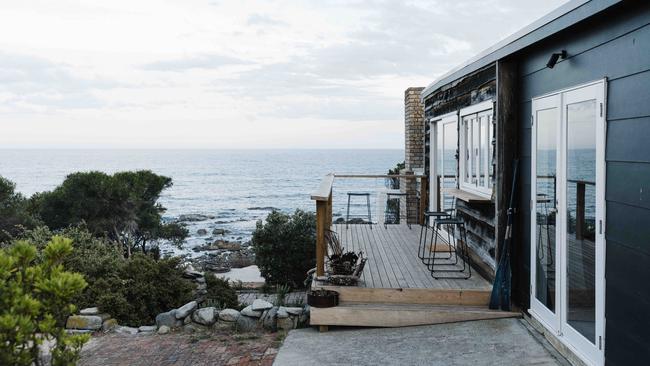
The transformation into stylish holiday home was quickly achieved, but this is no case of savvy investors flipping a tired property for resale. It’s the story of a couple finding their dream home (literally) and paying respect to its character so they can enjoy it for years to come, while sharing it with others. And yes, it does bring a pretty coin.
The rotting deck was replaced and the house opened up to the ocean views. French doors were installed from the sunken living room to the deck, and a glass sliding door from the kitchen where a window once was. The kitchen was rebuilt, with a mountain ash benchtop to match the polished floorboards. In went a Smeg oven and a butler’s pantry (stocked with essentials such as Tasmanian pepper berries and sea salt, mixed herbs, Villino coffee, organic herbal teas, fresh eggs and sourdough).
Artfully mismatched antique bentwood chairs tuck under a timber dining table from the original house, and 1970s Tessa leather armchairs surround a stone hearth – one of two cosy indoor fireplaces – making it a retreat for all seasons.
The original pine panelling was painted white, and every room thoughtfully adorned with beautiful objects: dried flowers, nautical knick-knacks, paintings and touches of artistic flair. The sunken living room is warmed by woollen carpet and has stylish Danish sofas.
The tastefulness that permeates throughout Whale Song is no accident. Ingrid is a landscape painter, Clifton a graphic designer. “We’re both visual creatures,” Ingrid says.
This is a house with a clear sense of self. It knows what it’s not. There’s a television, but it’s hidden behind a painting. Instead of an outdoor Jacuzzi there’s a cast iron enamel bathtub sunk into the deck (heaven, by the way), shrouded by melaleuca. And why convert a pokey single bedroom to the master bedroom ensuite when you could furnish it with an antique desk and dedicate it to art?
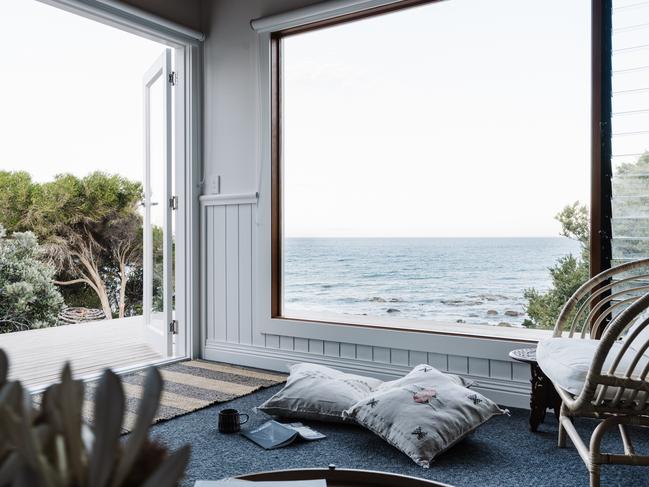
Guests have the run of Ingrid’s paint, and the wall above is pinned with their impressions of shack life: watercolours of the ocean, sketches of the fire pit, flowers, birds, and of course singing whales. “It’s taking on a life of its own,” Ingrid says, “which I completely love.”
We wake early. Sunlight skips across the sea and floods in the upstairs window, painting the walls gold. After breakfast we follow a coastal walking path that leads to Four Mile Creek, the outlet for Henderson Lagoon. Kayaks and dinghies lie upturned on the sand beside a small settlement of driftwood forts, those ephemeral structures recognisable on beaches the world over. Whale Song is not so different, a shack fashioned by sensitive, creative hands working in harmony with nature. A place to disconnect and ignore the clock, where time is measured by the tide pulling layers of kelp over the reef like a quilt.
With shells crunching underfoot I think back to Ingrid’s parting words as she summed up what makes Whale Song so special. “It’s a shack. It’s not trying to be anything else.”
It pays to believe in your dreams.
To-do list
Dine
Book personal chef Doug Herring, from Kitchen 7216 in St Helens, to prepare a gourmet meal at the shack.
See
Stroll around the estuary and try to spot the remains of an old stone road that ran to Scamander in the 1860s. Explore the gorges, rainforests and waterholes of nearby Douglas-Apsley National Park.
Try
Fish and chips from Tasmanian Coastal Seafoods (also known as The Gulch) overlooking the boat ramp at Bicheno.
Essentials
Falmouth is one hour and 40 minutes’ drive from Launceston and three hours from Hobart. Accommodation at Whale Song is from $600 a night, twin-share; varies according to the season.
Ricky French was a guest of Airbnb and Tourism Tasmania.


